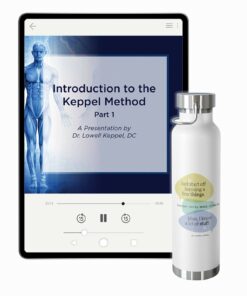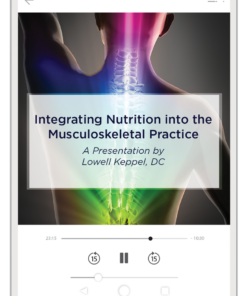Enjoy the latest installment of Dr. Lowell Keppel’s “Good to Know” series for practitioners.
As a wholistic healthcare provider, I don’t always have easy and inexpensive resources to offer to my patients for diagnostic testing. For this reason, I’ve learned many methods of determining a patient’s needs by using observational signs.
What the heck are observational signs? Well, pretty much what the name implies. Observational: looking, seeing—or like we were taught in chiropractic college—inspection. Old timers in healthcare have mastered these simple and often obvious signs verifying a patient’s legitimate health issues or concerns.
We will discuss numerous observational signs over the next several installments of our Good to Know series. After all, they are certainly good to know!
Tartar on the teeth. You know that white stuff that builds up on and between the teeth? If you regularly spot tartar on a patient’s teeth, Webmd.com has some ineffective, inconsequential suggestions for dealing with it. However, not one of them addresses the underlaying cause of tartar buildup.
Here is what you’ll find at WebMD:
- Brush for two minutes two times per day.
- Consider power toothbrushes, which may get rid of tartar better.
- Floss, floss, floss.
- Rinse daily.
- Watch your diet.
- Don’t smoke. (And if you do, smoke less…lol.)
As often occurs when you or your patients search online for information regarding health, sickness, or vitamins, you’re unlikely to find the cause of the problem, and the recommendations you do find will be pretty much the same old drivel like the tartar tips above. Lots of advice to “get plenty of sleep” and “reduce your stress,” etc. Right? You understand a majority of online health recommendations and advice is, well, mostly worthless.
Now let’s talk about the real cause of health issues: malnutrition, which Dr. Lee warned us about again and again.
Tartar on the teeth is a significant indicator of abnormal metabolism of calcium and phosphorous. When this occurs, it is not limited to the teeth but occurs in other parts of the body as well. A sign that should not be ignored.
Tartar may seem like a minimal concern that causes only minor health issues, but that’s just the tip of the iceberg. Spotting this observational sign in your patients can lead to clues about other and more consequential health issues.
John Courtney (who was, as Jean-Luc Picard would say, Dr. Lee’s “Number One”) discusses this in his article “Why Dental Caries?” from the Selene River Press Historical Archives:
“In the maintenance of bone and teeth structures, calcium, phosphorus, and potassium stand out as minerals that are vital. Potassium, being one of the alkaline ash minerals, would tend to protect our teeth from acids of fermentation that are formed by the breakdown of sugar products left as a residue on the teeth.”
He goes on to say that “where there was a phosphorus deficiency, there was a precipitation of calcium on the teeth as a tartar formation.”
Courtney explains that tartar cannot build up on the teeth when there is proper balance between phosphorous and calcium. Calcium deposits can be found not only on teeth but also joints, bursas, and the big one—your arteries! The article continues:
“The formation of tartar, of course, could cause irritation to the gums, leading to periodontal disease. In periodontal disease, irritation and inflammation set in surrounding the tooth. Any inflammation would have a decalcifying effect on the bone process, thereby loosening the teeth.”
In his tartar protocol in Adjuvant Protocols for Healing: A Practitioner’s Manual, Joseph Antell recommends the following from Standard Process to prevent tartar build up:
The proper phosphorous-to-calcium ratio is 10 parts calcium to 4 parts phosphorous. Maintaining this balance will prevent tartar from building up on the teeth.
When your body has proper acidity of fluids and sufficient phosphorous, the calcium stays in the fluid and does not precipitate out of the body’s fluids on the teeth as tartar or on the joints as bone spurs. Other indicators of phosphorous deficiency can include bursitis and stiff muscles—and you can see it in the person who reaches for the soda in the morning or lots of sugar in their coffee. The slow starter!
Look in your patients’ mouths. Look at their teeth. If you see tartar, you know there is a calcium/phosphorous issue. And if it is there in the mouth, then it is other places as well. Suggest Phosfood Liquid (3 droppers in water, 2 times per day) on an empty stomach. Your tired and worn-out patients with tartar will thank you.
Images from iStock/VladimirFLoyd (main), globalmoments (post).





